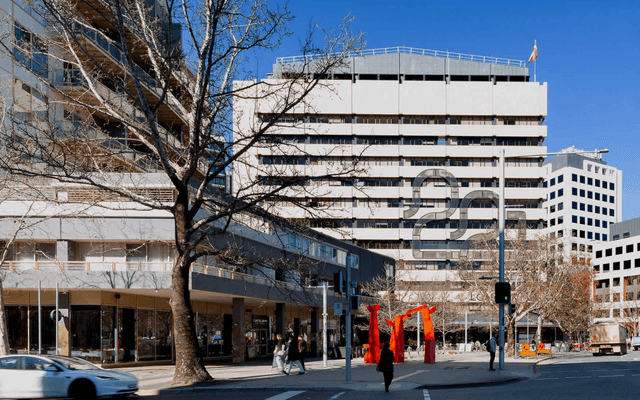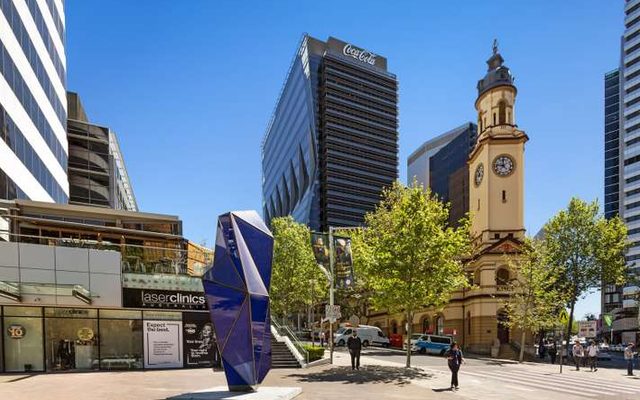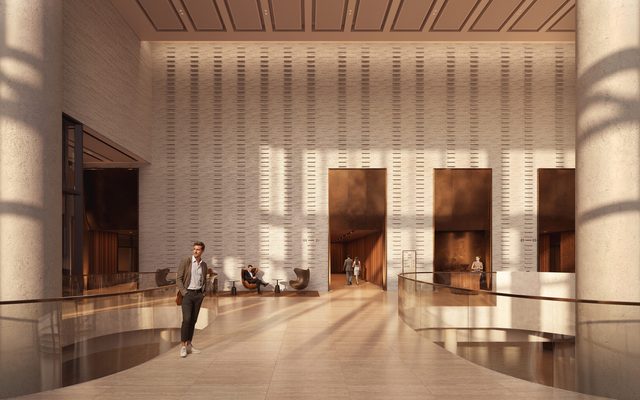This article is from the Australian Property Journal archive
THE return to the office has stalled in the face of strikes, floods, flu and another looming COVID Omicron wave, as businesses and organisations bristle at the prospect of new work-from-home orders again warding people away from the CBDs.
According to the latest office occupancy data from the Property Council of Australia, Sydney was steady at 55% in June, while Melbourne inched upwards to 49% and Perth to 65%. Adelaide was steady at 71% and Brisbane at 64%, and Canberra fell from 60% to 53%.
Property Council’s NSW executive director Luke Achterstraat said maintained there was an encouraging eight-fold increase from Sydney’s 7% occupancy in January, while Melbourne at that time was sitting at just 4%.
“Last month we have faced disruptions to our train network, strikes, inclement weather and waves of COVID-19 and the flu which have inevitably kept people at home,” he said.
“Given all these factors it is encouraging to see office occupancy has remained at 55% and has not gone backwards.
Despite the threat of another Omicron wave on the horizon, Achterstraat said “now is not the time to be bringing back conversations about work from home advice or mask mandates in offices”.
“One month of data does not equal a trend, so now is the time for government and employers to double down and maintain momentum for the return to office.”
The Australian Health Protection Principal Committee has warned of a new wave of COVID, sparked by the BA.4 and BA.5 Omicron subvariants. The Victorian government this week recommended employees to consider work-from-home arrangements as case and hospitalisation numbers rise, but stopped short of implementing any hard restrictions despite health advice to reintroduce limited mask mandates. NSW Health Minister Brad Hazzard has warned against mandates, warning they may harm mental health. Queensland Chief Health Officer Dr John Gerrard last week said there were discussions about reintroducing some mask rules.
Achterstraat said it had been over two years since COVID was detected in Australia and employers were committed to COVID safe plans with vaccination rates remaining very high.
Office Occupancy rates:
| Market | Melbourne CBD | Canberra | Sydney CBD | Brisbane CBD | Perth CBD | Adelaide CBD |
| Jul-20 | 20% | 49% | 36% | 48% | 67% | 62% |
| Aug-20 | 8% | 53% | 33% | 50% | 61% | 68% |
| Sep-20 | 11% | 51% | 39% | 58% | 70% | 74% |
| Oct-20 | 8% | 70% | 44% | 68% | 85% | 81% |
| Nov-20 | 14% | 72% | 50% | 68% | 85% | 76% |
| Jan-21 | 34% | 76% | 50% | 70% | 74% | 77% |
| Feb-21 | 27% | 72% | 54% | 72% | 72% | 77% |
| Mar-21 | 39% | 72% | 56% | 69% | 79% | 79% |
| Apr-21 | 45% | 70% | 65% | 70% | 78% | 78% |
| May-21 | 45% | 71% | 68% | 71% | 77% | 78% |
| Jun-21 | 26% | 72% | 67% | 71% | 76% | 80% |
| Jul-21 | 12% | 73% | 7% | 67% | 78% | 15% |
| Aug-21 | 7% | 8% | 4% | 60% | 77% | 65% |
| Sep-21 | 6% | 8% | 4% | 51% | 76% | 64% |
| Oct-21 | 4% | 7% | 8% | 57% | 79% | 64% |
| Nov-21 | 12% | 17% | 23% | 63% | 77% | 73% |
| Jan-22 | 4% | 7% | 7% | 13% | 66% | 11% |
| Feb-22 | 15% | 21% | 18% | 41% | 55% | 47% |
| Mar-22 | 32% | 45% | 41% | 48% | 45% | 61% |
| Apr-22 | 36% | 39% | 42% | 51% | 50% | 59% |
| May-22 | 48% | 60% | 55% | 64% | 63% | 71% |
| Jun-22 | 49% | 53% | 55% | 64% | 65% | 71% |
“We need to support our CBDs and offices particularly with economic uncertainty on the horizon – these figures should be a wake-up call to policy makers.
“Initiatives such as the Vivid Festival have demonstrated their value and as the biggest employer in the country, the NSW public service must ramp up their return to office,” he said.
Sydney’s vacancy rate remains at 9.3%, according to the Property Council. The city recorded peak occupancy levels at 66% and 60% respectively, with low days at 38% and 31%.
The Property Council’s latest office occupancy survey found the preference for greater flexibility including working from home was the major driver of occupancy levels, while 79% of respondents – up from 63% in May – believe it will take three months or more for occupancy levels to materially increase.
“Winter was always likely to be a difficult time for the pandemic, but we do expect to see office occupancy grow towards a higher ‘new normal’,” Achterstraat said.




